Phylum Chordata Order Saurischia | Class Reptilia Species †A. maleriensis Rank Genus | |
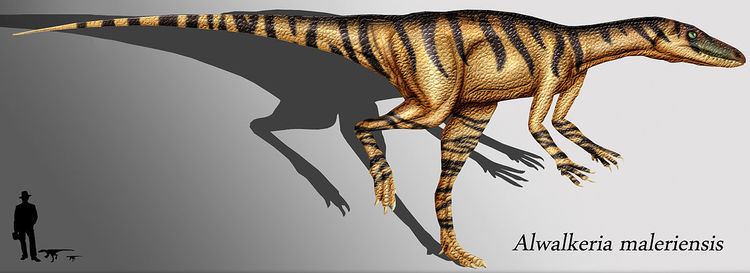 | ||
Similar Camposaurus, Caseosaurus, Eucnemesaurus, Chindesaurus, Antetonitrus | ||
Alwalkeria
Alwalkeria (/ælwɔːˈkɪəri.ə/; "for Alick Walker") is a genus of basal saurischian dinosaur from the Late Triassic of India. It was a small bipedal omnivore.
Contents
- Alwalkeria
- EtyomologyEdit
- DescriptionEdit
- Dentition and dietEdit
- Classification and phylogenyEdit
- Distinguishing anatomical featuresEdit
- Provenance and occurrenceEdit
- Fauna and habitatEdit
- References

EtyomologyEdit
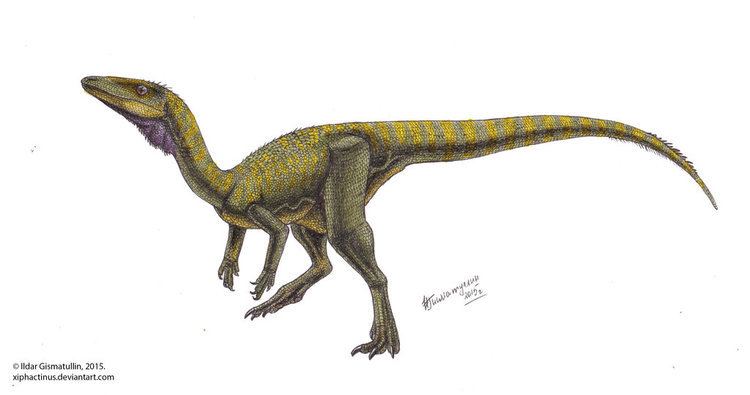
This dinosaur was originally named Walkeria maleriensis by Sankar Chatterjee in 1987, in honor of British paleontologist Alick Walker. However, since the original generic name was found to be preoccupied by a bryozoan, the name Alwalkeria was created in 1994 by Chatterjee and Ben Creisler. The species name maleriensis is a reference to the Maleri Formation, in India, where its fossils were found.
DescriptionEdit
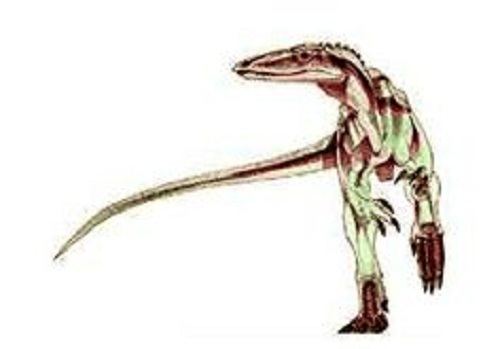
The only known specimen, holotype ISI R306 is incomplete and consists of parts of the front ends of the upper and lower jaws, 28 incomplete vertebrae from all parts of the spinal column, most of a femur, and an astragalus (ankle bone). The partial skull is about 4 centimeters long (1.5 in). Although material of Alwalkeria is limited, the spacing and shape of the teeth strongly resemble those of Eoraptor. As in Eoraptor, a gap separates the teeth of the premaxillary and the maxillary bones of the upper jaw. Other similarities in the skull of the two animals also link them on morphological grounds. Estimates suggest that Alwalkeria was at best 50 cm (1.6 ft) long. Gregory S. Paul estimated its weight at 2 kg and length at 1.5 m in 2010.
Dentition and dietEdit
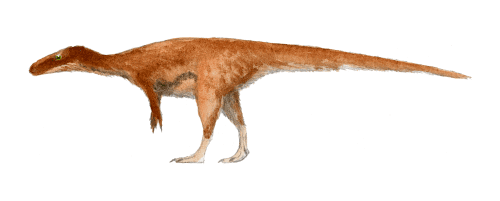
This dinosaur also has a heterodont dentition in the upper jaw, meaning that the teeth are differently shaped depending on their position in the jaw. Similarly to Eoraptor and basal sauropodomorphs, the front teeth are slender and straight, while the teeth in the sides of the jaw are curved backwards like those of predatory theropods, although none of these teeth are serrated. This arrangement of teeth is neither clearly herbivorous nor clearly carnivorous, which suggests that this dinosaur was an omnivore with a varied diet, including insects, small vertebrates, and plant material.

Rauhut and Remes (2005) found Alwalkeria to be a chimaera, with the anterior skull referable to a crurotarsan, and the vertebrae referable to other ancient reptiles. The femur and the astragalus are clearly dinosaurian however, with the latter possessing saurischian characteristics.
Classification and phylogenyEdit
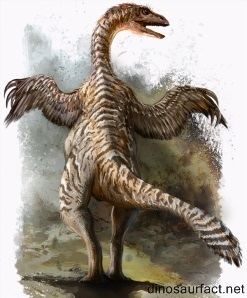
Chatterjee 1987 originally described Alwalkeria as a basal theropod. In 1996, Loyal et al. agreed with this classification. Paul (1988) understood Alwalkeria as a link between herrerasaurids and the genus Protoavis, and hence assigned it to Herrerasauridae based on features of the femur. However Langer (2004) and Martínez and Alcober (2009), observed that Alwalkeria was too primitive to be a theropod and considered it a basal saurischian. The current scientific consensus is that this genus does indeed occupy a basal position within Saurischia.
Alwalkeria has not been included in a cladistic analysis, but its similarities to Eoraptor suggest it may have held a similar position in the dinosaur family tree. However, the position of Eoraptor is disputed, with one analysis finding it within the order Saurischia, but basal to the Theropoda-Sauropodomorpha split (Langer 2004). Paul Sereno instead that Eoraptor is a basal theropod. Others place Eoraptor outside of Dinosauria completely.
Distinguishing anatomical featuresEdit
A diagnosis is a statement of the anatomical features of an organism (or group) that collectively distinguish it from all other organisms. Some, but not all, of the features in a diagnosis are also autapomorphies. An autapomorphy is a distinctive anatomical feature that is unique to a given organism or group.
According to Chatterjee (1987) Alwalkeria can be distinguished based on the following characteristics:
Several features make Alwalkeria unique among basal dinosaurs, such as its lack of serrated teeth, the mandibular symphysis being proportionally wider than almost any other known dinosaur, and there is a very large articulation between the fibula and the ankle.
Provenance and occurrenceEdit
The only known specimen of Alwalkeria was recovered in the Godavari Valley locality from the Maleri Formation of Andhra Pradesh, India. The remains were collected by S. Chatterjee in 1974 in red mudstone that was deposited during the Carnian stage of the Triassic period, approximately 235 to 228 million years ago. The specimen is housed in the collection of the Indian Statistical Institute, in Kolkata, India.
Fauna and habitatEdit
The Maleri Formation has been interpreted as being the site of an ancient lake or river. Indeterminate prosauropod material has been found in the Maleri Formation, and Alwalkeria is the only named dinosaur species from this locality.
